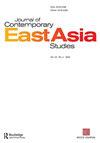Functions and significance of the central leading group for comprehensively deepening reforms and the central comprehensively deepening reforms commission
IF 1.4
Q1 AREA STUDIES
引用次数: 0
Abstract
ABSTRACT This study examines the function and meaning of Central Leading Group for Comprehensively Deepening Reforms (CDR Leading Group) and Central Comprehensively Deepening Reforms Commission (CDR Commission), created in the Xi Jinping administration, and discusses on their roles in policy making. This paper positions the CDR Leading Group and the CDR Commission as policy adjustment vehicles, analyzes them in terms of policy integration and administrative coordination, and examines whether they were created for organizational or policy purposes. Another perspective is how government agency coordination existing before the Xi Jinping administration changed. This study reveals the following. First, the CDR Group and the CDR Commission are organizations aimed at tackling new issues. Their activities demonstrate the leadership of Xi Jinping, who is at the top, and significantly contribute to establishing his own authority and strengthening his power base. Second, both the CDR Group and the CDR Commission have a multi-layered organizational structure, with the offices of the main body, special groups, and their offices playing a substantive role. In the economic field, for example, there is no change to the conventional coordination led by the National Development and Reform Commission and the Ministry of Finance. Third, these are merely “ad hoc” mechanisms for advancing comprehensively deepening reforms that were the decision of the third Plenary Session of the 18th Central Committee.中央全面深化改革领导小组和中央全面深化改革委员会的职能和意义
本文将CDR领导小组和CDR委员会定位为政策调整的工具,从政策整合和行政协调的角度对它们进行分析,并考察它们是出于组织目的还是出于政策目的而创建的。这项研究揭示了以下几点。首先,CDR小组和CDR委员会是致力于解决新问题的组织。第二,CDR组和CDR委员会都是多层次的组织结构,主体办公室、专门小组办公室和专门小组办公室都发挥着实质性的作用。例如,在经济领域,由国家发展和改革委员会和财政部领导的传统协调没有改变。第三,这只是十八届三中全会决定的全面深化改革的“临时”机制。
本文章由计算机程序翻译,如有差异,请以英文原文为准。
求助全文
约1分钟内获得全文
求助全文
来源期刊

Journal of Contemporary East Asia Studies
Social Sciences-Cultural Studies
CiteScore
2.50
自引率
0.00%
发文量
10
审稿时长
6 weeks
 求助内容:
求助内容: 应助结果提醒方式:
应助结果提醒方式:


